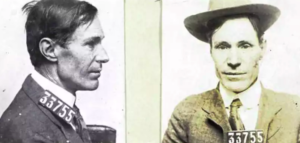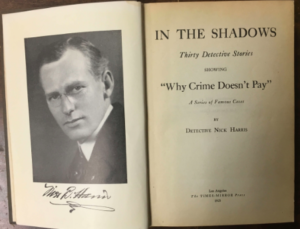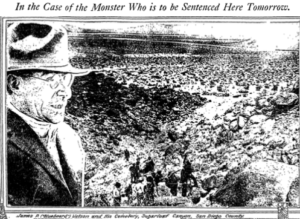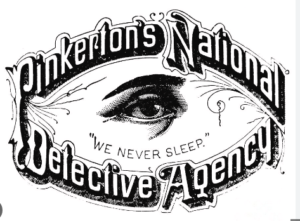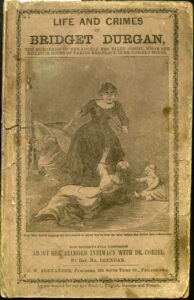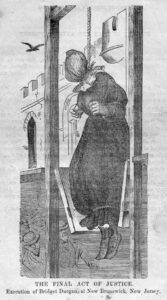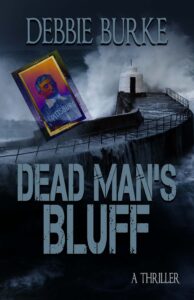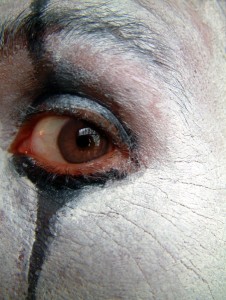
Photo credit – John Snape Wikimedia.com CCA SA 3.0
by Debbie Burke
From 1972 to 1983 in southern California, bodies of young male hitchhikers were being dumped near freeways, on beaches, and in parking lots. Many had lethal levels of alcohol and drugs in their systems, and had been tortured, mutilated, sexually assaulted, and strangled.
The so-called “Freeway Killer” eluded law enforcement because of the difficulty of linking the murders with no witnesses and little evidence.
In 1977, Patrick Kearney turned himself into the Riverside County Sheriff’s Office and confessed to more than 30 murders. He was given 21 life sentences. The public breathed a sigh of relief that the Freeway Killer had been stopped.
But murders continued.
In 1980, William Bonin was arrested when police found him inside his van, raping a handcuffed 17-year-old runaway boy. A scrapbook detailing numerous murders was found in his glovebox. Blood and other evidence led to a confession to more than 20 murders, some with the help of accomplices.
Despite multiple prior convictions for sexual assaults on minor boys, Bonin had repeatedly been released from custody. At those times he was deemed no longer a risk to society.
At trial, he was convicted of 10 murders and sentenced to death. Another trial in a different jurisdiction resulted in conviction and death sentences for four additional murders. Again, the public was relieved that the Freeway Killer had been caught.
But murders continued.
In 1983, California Highway Patrol officers pulled over a car for driving erratically. Randy Steven Kraft stumbled out with a bottle of beer and his pants unzipped.
Inside the car officers found the body of a Marine with his pants pulled down. He’d been strangled and sexually assaulted. In the trunk they found a binder with more than 60 coded entries that corresponded to murders Kraft had apparently committed. Evidence also included Polaroids of strangled, bound young men who appeared unconscious or dead.
This Freeway Killer was additionally dubbed the Scorecard Killer because of the binder full of notations about his victims.
Although Kraft never confessed, the evidence against him was overwhelming. He appeared to enjoy the attention at trial and his case dragged on for many months, costing $10 million, the costliest criminal case in Orange County at the time. He was convicted of 16 murders and sentenced to death. Additional murders in Oregon and Michigan were linked to him since he had traveled for work to those states when more bodies, violated in similar ways, had been found.
Kraft is now 80 and back in the news because DNA finally identified the remains of a body found near I-5 in Oregon back in 1980.
Larry Eugene Parks was a 30-year-old Vietnam veteran at the time of his death. His family had lost touch with him. Another dead man, Marine Corporal Michael O’Fallon, had been found in a nearby location a day before. Investigators believed the two murders were connected but couldn’t prove it and the cases went cold.
According to a USA Today story from May 12, 2025:
Last year, an Orange County Sheriff’s Department investigator contacted the Oregon State Police’s cold case unit, offering to help identify Parks’ remains with the use of forensic genealogy. Possible family members were contacted and submitted DNA samples for comparison, leading to Parks’ definitive identification.
Similarly, in October 2023, Orange County investigators used the technology to identity Michael Ray Schlicht of Cedar Rapids, Iowa, whose body was found in 1974 in unincorporated Laguna Hills, now the city of Aliso Viejo, California. Detectives are likewise working to determine whether Kraft is linked to Schlicht’s death.
This L.A. Times article from November, 2023 describes Schlicht’s identification also by forensic DNA.
Per this May 9, 2025 AP story, Oregon State Police spokesperson Kyle Kennedy says about Parks:
“There’s some evidence that we’re processing to determine that link [to Randy Kraft],” Kennedy said. “We are very confident that we have the correct person of interest.”
In the 1970s and 80s, three different serial murderers, each called the Freeway Killer, terrorized California.
Patrick Kearney, 85, remains incarcerated at Mule Creek State Prison in Ione, CA.
William Bonin was executed by lethal injection in 1996.
Randy Kraft, 80, received a death sentence that was not carried out. The last execution in California happened in 2006. Kraft remains in prison at San Quentin Rehabilitation Center.
~~~
Thank you to TKZ regular Kathy Ferguson who brought the story to my attention.
~~~
Serial killers are covered in Debbie Burke’s new book The Villain’s Journey – How to Create Villains Readers Love to Hate.
Publication date July 13, 2025.


 “La Barbe Bleue” (Bluebeard) is a French folk tale, first published in 1697. It tells the story of a rich man with an odd, bluish beard who marries women, slits their throats, and hangs their bodies on hooks in the basement of his castle.
“La Barbe Bleue” (Bluebeard) is a French folk tale, first published in 1697. It tells the story of a rich man with an odd, bluish beard who marries women, slits their throats, and hangs their bodies on hooks in the basement of his castle.